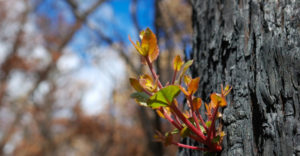
Friday 7th February 2020 will go down in Katanning’s history as the start of a most remarkable weekend of fire, community cohesiveness, shock and support.
As of 10th February, 4002 hectares was burnt, with only one house lost, thanks to the herculean efforts of hundreds of firefighters. For a brief summary of what happened, see this report from the Shire of Katanning public meeting information update. But one need only check the news or talk to a neighbour to hear dozens of stories of close calls and helpful strangers and heroic team efforts.
Now that we’re looking to the cleanup, I know that there are a whole lot of things to think about – replacing sheds and fences and getting some ground cover on paddocks burned. Dealing with insurance companies!
And just absorbing it all…
Those of us at Katanning Landcare would like to offer a few suggestions to consider when thinking about your areas of bushland that have been affected by the fires.
You can download a simple one page pdf of these key points by clicking HERE, but below you will find additional information, links and resources, if you’d like more information.
Track Clearing and Maintenance
- Get fallen trees and fences off your tracks, grade and maintain to ensure you have safe access to all areas of your farm and bush.
Prioritise Fence Removal, Repair and Reinstallation
- This could be a good time to review your fencing plan and determine the best spots for your fencing to protect bush and waterways.
- Remember, you may have a commitment to Landcare Fencing for 10 years from install, and fencing at these sites will need to be replaced.
- It’s important to keep stock off recovering bushland as these areas will be very susceptible to additional damage.
- Want us to come out and have a look, or confirm with our records? We’re happy to come see you when you’re ready. Just call!
Leave standing Trees and Fallen Logs
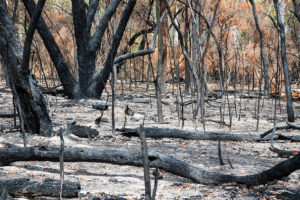
Devastated stringybark eucalypt (gum tree) forest after a severe wild fire in the Grampians, Victoria.
- It may seem like all your trees are dead, and it may be tempting to clear all standing and fallen trees to make it ‘look nice’ and to ‘erase’ the fire. But these trees can be valuable resources in preventing erosion, providing habitat and ‘niches’ where regrowth can occur.
- By all means, remove dangerous trees, but leave some standing for lookout points for birds of prey, and leave some fallen along creeklines to slow water flow, provide habitat, and to allow safe pockets for natural regeneration.
- Some further resources and information:
- Native Trees in Burn Areas fact sheet
- Burnt trees – a valuable resource
- Burnt trees – will they re-grow?
- Burnt trees and their leaf littler – Nature’s protective barrier
- Link to video about Bushfire Recovery: Erosion
- And this link to a video about managing erosion and water quality using sediment fences
Don’t Plant in Burnt Bushland This Year
- Wait through this winter and see what natural regeneration occurs in your burnt areas, and then plan for revegetation next winter (2021).
- Have a look at these images of the bush regrowing in some of the national parks over east that were burnt if you want reassurance that the land will recover, if given the chance.
- Do consider planting shelterbelts for fire protection and for wildlife. These are examples from Victoria – while the specific species may vary, the principle is sound.
- Here is a very quick list of some of the native species that are fire-retardant (though everything burns eventually) and are readily available from the Katanning Environmental Nursery, and will grow in the Katanning area:
- Trees: Eucalyptus spathulata, Casuarina obesa
- Tall Shrubs: Acacia saligna
- Smaller Shrubs: varieties of: Mariena (Bluebush), Westringia, Dianelala, Anigozanthus (Kangaroo paws), Patersonias (Native flag iris), Eremophila, Atriplex (saltbush), Lomandra
- Groundcovers, creepers and climbers: varieties of: Rhagodia, Myoporum, Dampiera, Kennedia, Carpobrotus (pig face), Hardenbergia, and Kennedia prostrata (running postman)
- This detailed list of native fire-retardant plants was compiled in Victoria, but we have many of these same species locally. Just ask at the Katanning Environmental Nursery 0428 479 623 or nursery@katanninglandcare.org.au to discuss availability and suitability to your site.
- Sabrina Hahn says the following: “… Any trees growing close to your home should be fire retardant. “Meaning that when the fire comes through that they slow it down, or they cool that fire down,” she advises. “There’re three main reasons that we put trees around our house to make them fire safe.
- 1. The fire retardant tree is a physical heat barrier to the heat blast coming through.
- 2. The fire retardant tree acts as a green shield in front of your house and stops the embers from getting to your home. As the fire comes through fine embers fly up, and the trees that resist fire will help stop those embers from getting through.
- 3. Many trees will actually stop the fire from moving through because the amount of moisture in the leaf tissue of the plant is enough to stop the fire.” (Source: http://www.abc.net.au/local/stories/2014/10/23/4112923.htm)
- Here is a very quick list of some of the native species that are fire-retardant (though everything burns eventually) and are readily available from the Katanning Environmental Nursery, and will grow in the Katanning area:
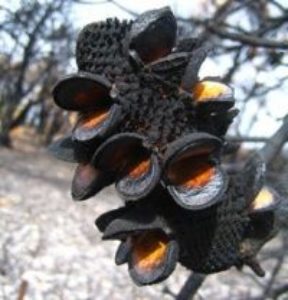
Prepare for Early Weed Control
- Weeds are going to emerge first, and it will be important to keep them under control. Keep an eye out on areas where you know weeds existed before. Let them emerge to hold the soil down until we get some rain, and them knock them back – especially before they flower.
- Some weeds may require special or additional control—seek professional advice if needed.
- For more information:
- Link to video about Bushfire Recovery: Weeds
- Download this information sheet regarding Post-Fire woody weed control in bushland (it’s from South Australia, so specific advice for WA weeds may be needed)
- Some advice for managing weeds and establishing/recovering pastures after fire (Victorian, but similar principles should apply here)
- Indiscriminate use of herbicides will affect desirable species and delay the recovery of the pasture or bushland. Herbicides should be target-specific and used strategically as part of integrated weed control programs.
- After fire, you will see many unusual species, such as native fireweeds (Senecio species) and Kangaroo Apple and introduced Black Nightshade (both Solanum species), that respond to the post-fire conditions. They are usually harmless and will disappear over time. If in doubt, contact your Landcare officer or DPIRD (Ag Department) – they may ask you to email a photograph or bring in a bagged sample for identification.
Prepare for Feral Pest Management
- Cleared bush land may expose fox dens and rabbit warrens. Use a variety of tactics to manage ferals now: rip warrens, bait and shoot.
- For more information, contact DPIRD (Ag Department) or DPAW or your local Landcare group. Also:
- Rabbit Free Australia quick guide to different rabbit control treatments
- Pest Smart Fox Control Glove Box Guide
- Get involved with the annual Red Card for Rabbits and Foxes community-based feral animal management program
- For more information, contact DPIRD (Ag Department) or DPAW or your local Landcare group. Also:
Install Nest Boxes for Native Animals in Nearby Bush
- Nesting sites for native animals will be lost. Hollow logs can be moved to established bush, and nest boxes installed to support animals that have fled.
- Link to video about Bushfire Recovery: Native Animals
Take Photos
- Take before photos from set points so you can record the recovery.
- Honestly, you’ll be grateful to see the changes, and may even record some unique plants that only come out after fires.
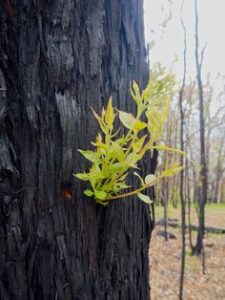
General advice and links:
- Bushfire recovery and your property
- Bushfire recovery on agricultural properties
- Bushfire recovery and biodiversity
- Land management after bushfires
If you have questions about any of this, come chat with us!
Visit us at the Katanning Landcare Centre at 10 Dore Street, email hello@katanninglandcare.org.au or call 9821 4327.

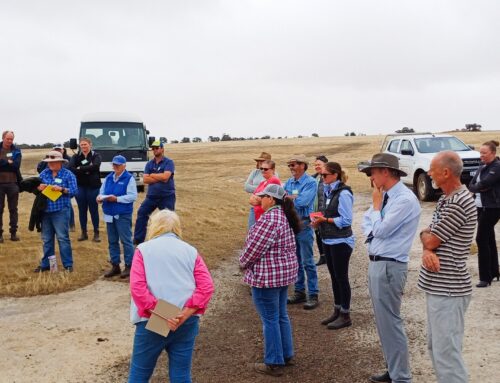
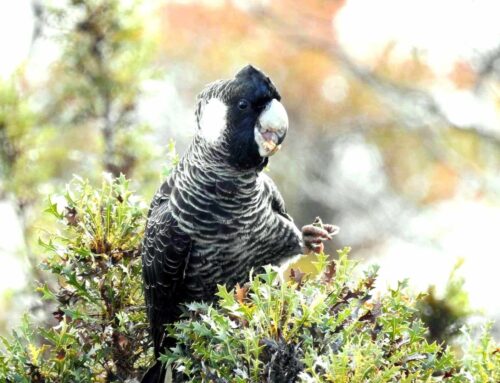

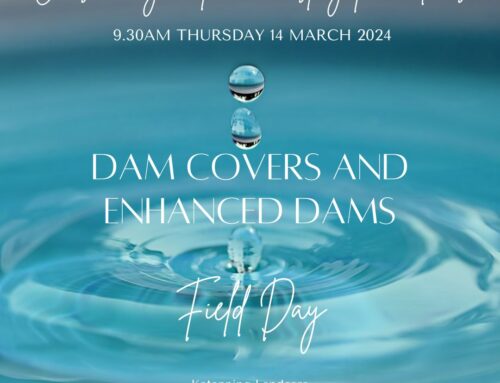

Leave A Comment